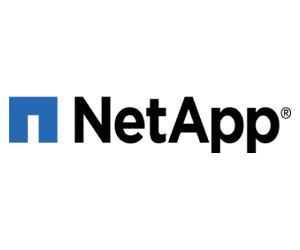HEALTHTECH: Why is a data foundation so important for today’s healthcare organizations?
RAYMOND: Think about building a house, and you have three different contractors building the foundation, doing the framing and doing the finishing work. If they don’t talk, if they are working from three different blueprints, the foundation could be built in a way that it makes it impossible to build or expand the house.
If you don’t manage your data in a foundational way, you’ll find yourself siloed, backed into a corner or unable to expand your data storage infrastructure. When a data foundation becomes part of your organization’s strategic plan, you can invest in technology that enables you to add to your infrastructure at any given time and effectively counteract the expansion of data. You’re not buying throwaway technology that you can’t continue to build on.
HEALTHTECH: How do you help organizations assess their storage infrastructure challenges?
RAYMOND: I draw on my training in Lean and Six Sigma: Where there are areas to eliminate waste, you can eliminate cost. When file storage, block storage and object storage are managed separately, you need separate administrators and separate security postures, and that comes with added cost and complexity.
NetApp allows you to assimilate multiple workflows onto a single storage foundation, which allows healthcare organizations to get out of the data center business. With a single storage foundation, organizations can store data wherever it’s most cost-effective and they can move data as storage costs change over time, from colocated to hybrid to the cloud and back again.
RELATED: EHR expansions require robust storage solutions.
HEALTHTECH: When should healthcare organizations start planning for a storage upgrade?
RAYMOND: We tell organizations to look for an inflection point. Do you have a certain storage array that’s coming up for upgrade, refresh or retirement? This is a good opportunity to explore your storage options.
From there, it’s important to look at it holistically, to use this as an opportunity to migrate all your data onto a single platform if it makes sense. For example, if you’re refreshing your electronic health record system, you need to consider whether you want to want to get out of the data center business, or whether it’s time to migrate your EHR to a cloud storage platform.
Keep in mind that there isn’t a single roadmap for everyone. I like to use the analogy of The Wizard of Oz: It is very difficult to just click your heels and end up in the cloud. You need a cloud strategy, you need to know where you are starting from and where you want to go. So, every health system journey will be different, the road will be different. NetApp can help you get to where you want to go and support you for the entire journey.
HEALTHTECH: Why is scalability so important when evaluating storage needs?
RAYMOND: Everyone’s in acquisition mode. In a few years, there won’t be many single, stand-alone community hospitals left. As integrated delivery networks expand, they need to assess whether they have the physical space for a data footprint that could double or triple in size in a single year.
On top of that, healthcare is a data-hungry industry. In my previous role as an associate CIO for a national health system, we had more than 12 petabytes of data, and 8PB was in EHR, enterprise resource planning and picture archiving and communication system (PACS) data.
MORE FROM HEALTHTECH: How organizations can create a modern data experience.
HEALTHTECH: What workloads are best optimized for on-premises storage, cloud storage or a hybrid?
RAYMOND: There’s a big push among EHR vendors to enable their software to run in the cloud because of the resiliency and cost-effectiveness. Creating storage arrays in the public cloud on which to run EHR workloads makes them secure, scalable and easy to manage. At a previous organization, we moved our Epic environment to a commercial data center running on all NetApp storage. Over the course of seven months, we eliminated our owned 12,000-square-foot data center to 600 square feet in a commercial data center. This allowed us to achieve savings of more than $56 million in operational costs over three years.
PACS is another great example. Traditionally, health information management departments wanted all imaging data on hot storage, but this isn’t cost-efficient, since it means you’re constantly adding to that array. With a good data foundation in place, you can create a data tiering strategy. Recent images can be stored on-premises on flash, while older images can be moved to cold storage in the cloud and queued up for viewing as needed.
Brought to you by:











